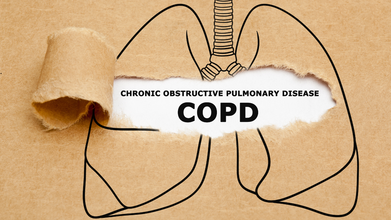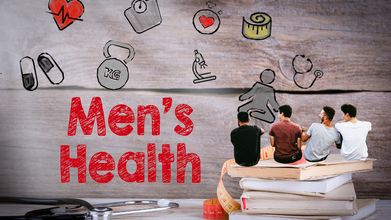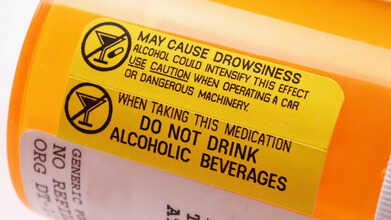- Health Conditions A-Z
- Health & Wellness
- Nutrition
- Fitness
- Health News
- Ayurveda
- Videos
- Medicine A-Z
- Parenting
Could Your Feet Be Telling You About High Cholesterol? 7 Signs To Watch For

High cholesterol is a potential threat and "killer" which contributes to arterial blockages, increasing the likelihood of heart disease, stroke, and peripheral artery disease. My uncle, seemingly healthy, recently faced this issue when he got diagnosed with high cholesterol which was only brought to light when the doctor saw clear signs of the 'fatty deposits' in the blood on his feet. This diagnosis forced me to think about whether healthier eating and regular check-ups can help us lead a disease free lifestyle, highlighting the critical need for early detection and proactive management of cholesterol.
So while high cholesterol can severely affect your health, your feet might reveal the early warning signs helping you take proactive steps to manage my cholesterol and improve my overall well-being.
Most people don’t notice symptoms when their cholesterol levels rise, but over time, this can increase the risk of serious health conditions. High cholesterol is mainly triggered by lifestyle habits, to be definitively diagnosed with a blood test only. However, watching out for signs in your feet. Symptoms like cold feet or numbness may indicate high cholesterol, potentially leading to peripheral arterial disease (PAD), a condition where fatty deposits restrict blood flow to leg muscles.
High Cholesterol Feet Warning Signs
Experts warn that a burning pain in the toes and feet, especially at night, could signal high cholesterol levels. This discomfort may indicate atherosclerosis, a buildup of plaque in blood vessels that restricts blood flow. Unlike everyday aches, this pain burns or aches while resting in bed, suggesting your extremities aren’t receiving enough oxygen-rich blood. Gout, which causes burning pain in the big toe, can be distinguished by additional symptoms like redness, swelling, and tenderness. It's crucial to heed these signs and seek medical advice immediately for a cholesterol test and heart health exam if you notice any of the following symptoms:Painful Cramping in the Legs and Feet
One of the first signs of high cholesterol you might notice is painful cramping in your legs and feet, especially after physical activity. This discomfort, known as claudication, occurs when cholesterol-laden plaques narrow your arteries, reducing blood flow to your extremities. If you experience unexplained cramps in your feet or legs, particularly during exercise, it's essential to consult a healthcare professional.
Cold Feet
Chronic coldness in your feet, regardless of the weather, can indicate poor circulation due to high cholesterol. When arteries are clogged with cholesterol, blood flow to your feet is restricted, making them feel colder than usual. If you notice persistent coldness in your feet that doesn't improve with warmth, it may be a sign of high cholesterol.
Discolored Skin on Your Feet
High cholesterol can cause changes in the color of the skin on your feet. Reduced blood flow can make your feet appear pale or even bluish. In severe cases, a lack of oxygen can cause skin ulcers or sores that are slow to heal. Keep an eye on any changes in skin color or the appearance of non-healing sores on your feet.
Numbness or Tingling
Numbness or a tingling sensation in your feet can be a warning sign of high cholesterol. When blood flow is restricted due to cholesterol buildup, your nerves might not receive enough oxygen-rich blood, leading to sensations of numbness or tingling. If these sensations persist, it’s important to seek medical advice.
Brittle Toenails
Healthy blood flow is crucial for maintaining strong, healthy toenails. When cholesterol levels are high, reduced circulation can cause your toenails to become brittle, thickened, or discolored. If your toenails show these changes without an obvious cause, such as injury or fungal infection, high cholesterol might be the culprit.
Swelling in the Feet and Ankles
Swelling in your feet and ankles, known as edema, can be related to high cholesterol. Poor circulation can cause fluid to build up in your lower extremities. If you notice persistent swelling in your feet and ankles, it’s worth discussing with your doctor, as it could be a sign of high cholesterol affecting your heart and vascular system.
Slow-Healing Wounds
High cholesterol can slow down the healing process of cuts and wounds on your feet. Cholesterol deposits narrow and harden the arteries, reducing the efficiency of blood flow necessary for wound healing. If you have sores or cuts on your feet that take an unusually long time to heal, this could be a sign of high cholesterol.
Why These Signs Matter?
Cholesterol impacts circulation, leading to visible signs on the feet such as pain, coldness, or swelling. These symptoms signal reduced blood flow due to arterial blockages, making early detection critical. Recognizing these signs helps address high cholesterol before it leads to more serious health issues. High cholesterol can lead to serious conditions such as peripheral artery disease (PAD), heart attack, and stroke.What are Preventive Measures and Management for High Cholesterol?
If you identify any of these symptoms, it's essential to consult a healthcare professional. It might be recommended to conduct a blood test to check your cholesterol levels and assess your overall heart health. Here are some steps you can take to manage high cholesterol and prevent complications:Adopt a Healthy Diet
Focus on a diet rich in fruits, vegetables, whole grains, and lean proteins. Avoid trans fats, saturated fats, and excessive sugar, which can increase cholesterol levels.
Exercise Regularly
Engage in regular physical activity, such as walking, jogging, or cycling, to improve circulation and help manage cholesterol levels.
Quit Smoking
Smoking damages blood vessels and can exacerbate the effects of high cholesterol. Quitting smoking improves your overall cardiovascular health.
Limit Alcohol Intake
Excessive alcohol consumption can raise cholesterol levels. Limit your intake to moderate amounts.
Medication
In some cases, lifestyle changes alone may not be enough. Your doctor may prescribe cholesterol-lowering medications to help manage your levels effectively.
High cholesterol often goes unnoticed until it causes significant health issues. Paying attention to the signs your feet might be showing, you can catch this silent threat early which can help maintain a optimal cholesterol levels and protect your heart health.
Why COPD Is Now Affecting People in Their 20s and 30s

Credits: Canva
Chronic obstructive pulmonary disease (COPD) has long been seen as a condition of older adults, typically tied to years of smoking. But across India, pulmonologists are increasingly diagnosing it in people in their 20s and 30s. This shift, experts say, reflects a deeper and more troubling change: young adults are growing up and living in environments where the lungs never truly get a chance to breathe clean air.
A Shift From “Smoker’s Disease” to “Exposure Disease”
The biggest change is the cause itself. As Dr. Raja Dhar, Director & HOD, Pulmonology, CK Birla Hospitals, CMRI Kolkata, explains, “COPD is increasingly becoming an ‘exposure disease’ rather than a ‘smoker’s disease.’ In India, non-smoking COPD is numerically a much larger problem.”
This exposure begins early—sometimes in childhood.
Dr. Dhar highlights how even limited exposure can have lifelong consequences: “Severe airway obstruction can be traced back to just six to seven years of biomass smoke exposure in a poorly ventilated kitchen during a child’s formative years.”
Dr. Harshil Alwani, Consultant – Pulmonology, CK Birla Hospitals, Jaipur, also points to the changing risk profile. According to him, “newer epidemiological data show that non-smoking drivers—especially air pollution and occupational exposures—are playing a disproportionately large role in younger people.” He adds that rapid urbanisation means more young adults are chronically breathing polluted air from childhood onwards.
Improved diagnosis and greater awareness also mean younger patients with persistent symptoms are now being evaluated more often, he notes.
Beyond Smoking: The Real Culprits Behind Early COPD
Air Pollution
Both experts agree that polluted air is the biggest trigger today. Dr. Alwani explains that long-term exposure to PM₂.₅ is directly linked to lung decline and COPD. “Recent research shows that temperature and humidity modulate the harmful effect of PM₂.₅, making COPD risk worse under certain climatic conditions,” he says.
Dr. Dhar adds that India’s air quality is deteriorating nationwide: “Ambient outdoor air pollution is a severe risk, as air quality across 98% of India is worse than WHO standards.”
Indoor Pollution
Household pollution remains a massive issue. Biomass fuel used for cooking is, as Dr. Dhar puts it, “the largest non-smoking contributor, resulting in numbers approximately three times that of smoking-related COPD.”
Occupational Hazards
Young adults working in construction, mining, welding, or factory settings face daily exposure to dust, fumes, and chemicals. Dr. Alwani notes that such environments “carry a significantly increased risk.”
Childhood Lung Infections
Recurrent infections can impair lung development and reduce lung reserve, making early-onset disease more likely.
Genetic Factors
Conditions like alpha-1 antitrypsin deficiency, though rare, still contribute when combined with environmental triggers.
Delhi’s Winter Pollution: A Direct Route to Lung Damage
Every winter, Delhi’s smog becomes a health emergency. According to Dr. Dhar, “High winter pollution, particularly hazardous levels of PM2.5, acts as a chronic, low-grade chemical burn on the young respiratory system.”
Dr. Alwani adds that winter inversion traps pollutants closer to the ground, amplifying PM₂.₅’s damage.
The Vaping Problem
Vaping and e-cigarettes, widely perceived as harmless, have added a new layer of risk. Dr. Alwani warns, “Vaping is not benign. Its aerosols contain volatile compounds, heavy metals, and ultrafine particles that trigger inflammation and oxidative stress—central pathways to COPD.”
Dr. Dhar echoes this concern: “Any inhalation of heated chemical aerosols is a significant lung irritant and pro-inflammatory agent.”
Symptoms Young Adults Should Never Ignore
Doctors urge young adults not to dismiss symptoms like:
- Persistent cough
- Breathlessness during routine activity
- Wheezing or chest tightness
- Frequent colds or bronchitis
- Fatigue or reduced stamina
Why Early Diagnosis Matters
Early spirometry can dramatically change outcomes. As Dr. Dhar puts it, “Early intervention allows us to remove the source of exposure and start therapy, which can effectively preserve the patient’s remaining lung function.”
Dr. Alwani adds that catching the disease early can “significantly slow further lung damage” and prevent long-term complications.
International Men's Day: Millions of Men May Be Living With Undetected Autoimmune Disorders, Know What They Are

Credits: Canva
On International Men's Day, we shift our focus on men's health and why is it important to talk about it. Time and again experts, doctors, and studies have shared how men generally visit GPs less than women. As per the NIH, US, the consultation rate is 32% lower in men than women. The difference is often attributed to a combination of women being more willing to admit sickness and seek help, while cultural factors and barriers for men keep them away from seeking help. However, not anymore, because both sexes require help when they need, especially when it is about their health.
Also Read: The Kessler Twins Die By Assisted Suicide in Germany; How It Differs From Euthanasia
As per a 2024 study published in the Journal of Clinical Investigation, about 5.7 million men could be living with an autoimmune disease that they do not even know about. The disease in men are often overlooked, all thanks to the social barriers.
Sex chromosomes play a key role in predisposing men or women to an autoimmune disease. Females have XX chromosomes, while male have XY chromosome and each chromosome carries gene sequence, which means specific pieces of DNA. Since X chromosome carries a bunch of gene related immunity,, having two of them could explain why women often have a higher rate of autoimmune diseases.
However, men are less likely to book time with their doctors, which could impact the discrepancies between sexes. They could thus often be undiagnosed or could flag their symptoms only when the disease has progressed.
Four Autoimmune Diseases Men Should Be Aware Of
Psoriasis
This is an inflammatory skin condition which affects both men and women. However, studies including the one published in 2023 in the International Journal of Women's Dermatology have suggested that men could develop this condition near their genitals and butt than women.
Also Read: Delhiites, Skip Your Morning Walk, You May Be Inhaling 3x Toxic Air Than Usual, According To Doctor
Ankylosing Spondylitis or AS
As happens due to the inflammation of the spine's joints and ligaments and could cause back pain and stiffness. While the condition is rare in itself, it could affect men more than women, that too at a younger age, usually below 40. A South Korean study from 2018, published in Scientific Reports, AS was 3.6 times more prevalent in men than women.
Type 1 Diabetes
The 2018 report by the Centers for Disease Control and Prevention, (CDC), US, provides data that type 1 diabetes may be slightly more in common in men than women. Though, other studies have been a mixed bag. Unlike type 2 diabetes, type 1 is an autoimmune disease, which means, here immune system attacks are specialized. What men should know is that both types of diabetes could up their risk of erectile dysfunction (ED) due to persistently high blood sugar, which could harm their nerves and blood vessels.
A 2016 study published in the International Journal of Impotence Research found that nearly 60% of 151 men being treated for type 1 diabetes had mild ED.
Inflammatory Bowel Disease (IBD)
The most common forms are Crohn's disease and ulcerative colitis, that take hold of digestive system. Chronic inflammation in the gut spikes the risk of colorectal cancer, which is one of the leading cause of death in men between 20 to 49 of ages. In fact, a 2023 study published in the journal Cancers noted that men with IBD faced a higher risk of developing colorectal cancer than women with IBD.
What Does A Black Box Warning On Your Prescription Drug Really Mean?

Credits: Canva
Not every medicine carries the same level of risk. Some drugs can trigger reactions that are severe or even life-threatening. When that possibility exists, the manufacturer is required to place a special notice inside the prescribing information. This highlighted section is known as a black box warning.
A black box warning is meant to draw clear attention to the most serious dangers linked to a drug. Many medicines fall under this category. Still, having the warning in place does not automatically make the treatment unsafe. When a drug is used correctly and monitored by a trained professional, the benefits may outweigh the risks.
The sections below outline what an FDA black box warning means, why a medicine might receive one, and how it may influence your treatment plan.
What Is An FDA Black Box Warning And What Does It Signify?
A black box warning is the strongest caution that the FDA can attach to a prescription drug. You might also see it described as a boxed warning.
The presence of this warning does not mean a person should never take the medication. Instead, it alerts doctors and patients to serious potential harm. This information helps clinicians decide who is an appropriate candidate and under what circumstances the drug should be used.
Many medicines with boxed warnings remain the best or only option for certain conditions.
How Serious Is A Black Box Warning?
A drug receives this type of label when it has been linked to outcomes such as permanent injury, hospitalisation, or death. These warnings should be read carefully, and patients should discuss them openly with their healthcare provider.
Doctors follow specific precautions when prescribing drugs that carry this label to minimize unnecessary risk.
Where Can I Find A Drug’s Black Box Warning?
The warning sits at the very top of the medication’s official package insert. Its placement is deliberate so it stands out immediately. The text is printed inside a bold black border, which is how the term “black box” took hold.
You may not always receive the full package insert from the pharmacy. However, you might receive a medication guide if the drug is considered high-risk. These guides describe proper use and highlight major side effects. You can also look up medication guides online.
Information about boxed warnings is available from multiple sources. The FDA website, the drug manufacturer’s website, and medical reference sites used by clinicians all include these details.
How Does A Drug End Up With A Black Box Warning?
Every prescription drug must go through extensive testing before it reaches the market. During this process, researchers aim to uncover risks that could require a boxed warning from the start. Even so, some side effects only appear once large numbers of people begin using the drug in everyday settings.
Because of this, most black box warnings are added after a medicine has already been approved. The FDA continues to monitor safety reports through MedWatch, a program where patients, physicians, and companies can report problems.
These reports are gathered in a database called the FDA Adverse Event Reporting System. When the agency notices a pattern of serious reactions, they investigate. If needed, they update the prescribing information and add a boxed warning so that future users are clearly informed.
© 2024 Bennett, Coleman & Company Limited

